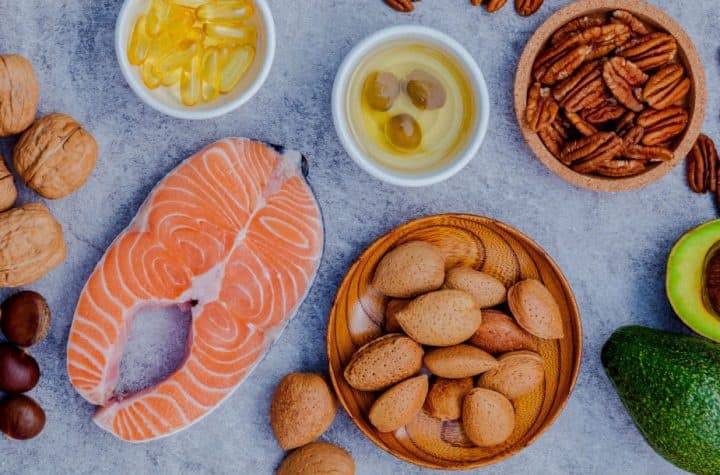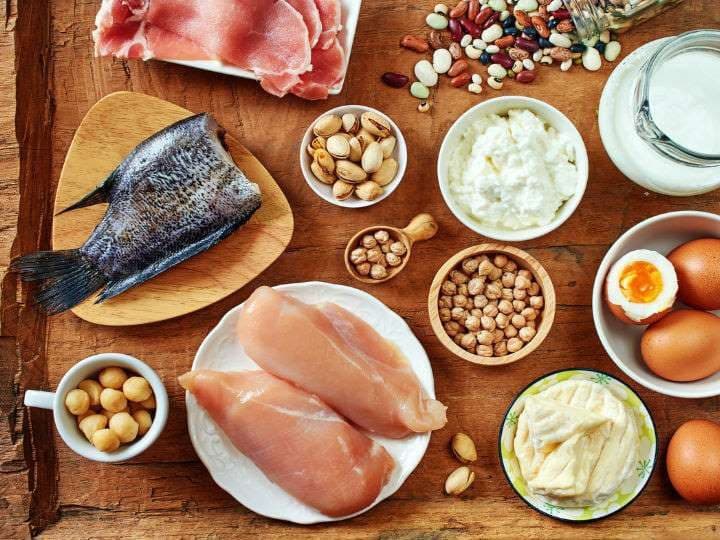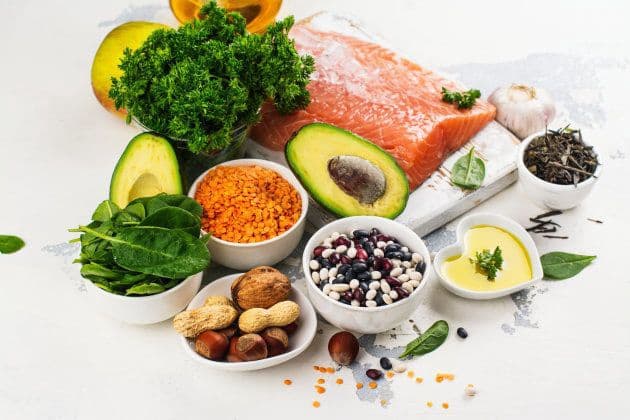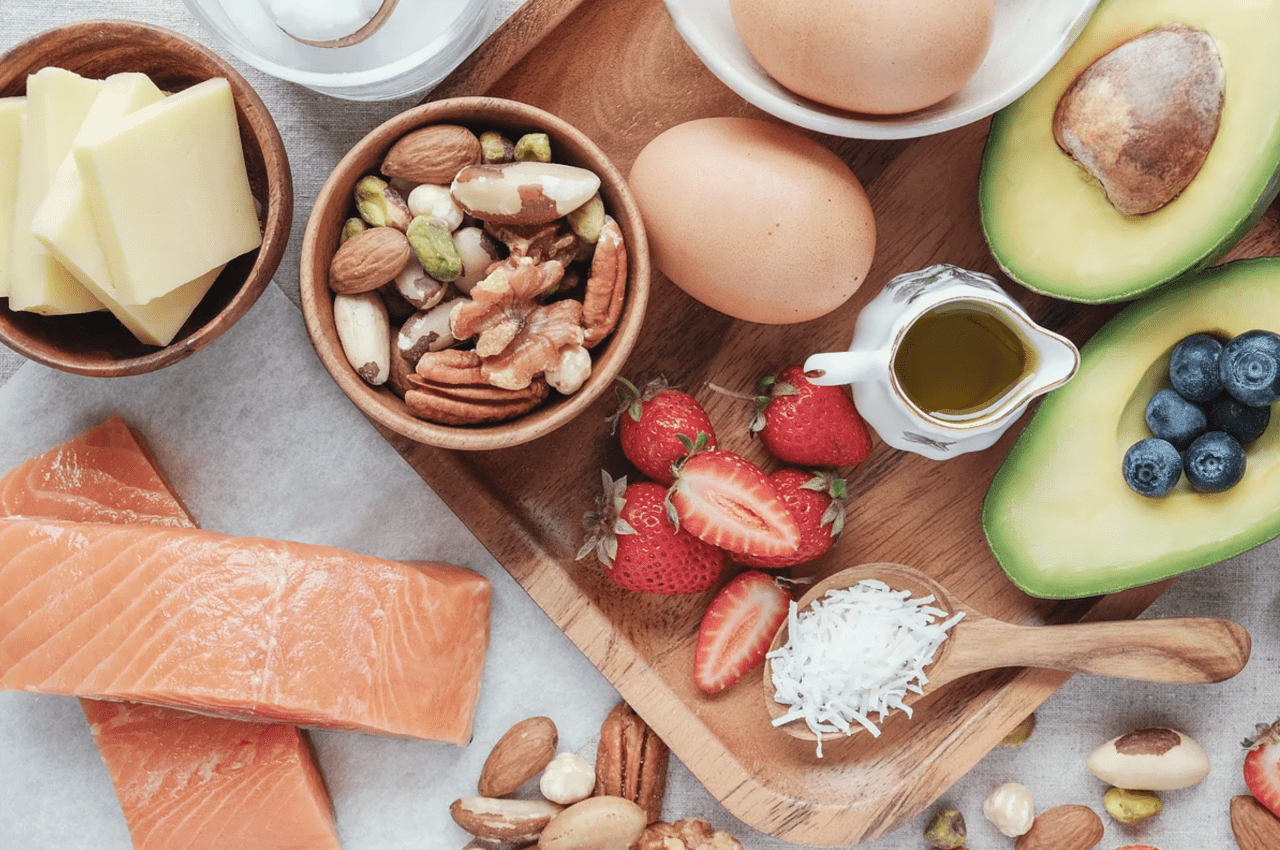It quite common that people mix low carb diets with keto diet. Many people believe that a low carb diet is a keto diet. However, that’s not quite true. When it comes to low carb vs keto comparison, low carb concept is a lot broader and covers more diet types than keto.
In this keto vs low carb diets guide I will explain the key differences and similarities between low carb and ketogenic diets.
Here you will also find some of the most common low carb diets along with their key principles.
Low Carb Diet Principles
As the title of the diet type suggests, it is low in carbs. Many diet specialists agree that lowering your daily carbohydrate intake to 50 – 150 grams net carbs is enough to be following a diet that low in carbohydrates.
Some famous, mostly commercial diets, such as South beach diet and Atkins recommend to lower you daily net carbs intake to 20 – 50 g per day. This way your body doesn’t have enough glucose to provide itself with energy throughout the day. This way the body enters ketosis – a metabolic state when the body starts burning accumulated fat for energy instead of carbohydrates.
In most cases, when people reach their goal weight, they slowly include carbs back into their daily menu. However, it is best to add them step by step and track whether your body starts gaining weight again. Choosing this method allows you to find the sweet spot for maintaining your weight.
So, as you can see, a low carb diet only means that you reduce your daily carbohydrate intake to 50 – 150 g net carbs or even less. So, technically you don’t need to follow any special diet or meal plan. Once you reduce carbs – you’re on a low carb diet.
Low Carb Doesn’t Mean Keto
As mentioned before, lowering your carbohydrate intake to 50 – 150 g net carbs per day means that you’re following a low carb diet. However, that is not enough to call the diet keto. That, in fact, is the main difference in keto vs low carb.
Keto is a low carb and high fat diet (LCHF). Which means that you not only need to reduce your carbohydrate intake to a minimum but also make fatty products your main source of energy.
If you’re following a ketogenic diet, your daily calories should be distributed it a similar manner to this one:
- 70 – 80% of calories should come from fat
- 15 – 20% of calories should come from protein
- 5 – 10% of calories should come from carbohydrates
Also, the net carb count should be limited. If you follow a very strict keto diet, you should eat only up to 20 grams of net carbs per day. More liberal keto versions allow you to eat up to 100 grams of net carbs per day. However, this amount could be too big to keep you in ketosis.
As you can see, a low carb diet is more liberal than keto and doesn’t require you to make fat your main source of calories. When you’re on a low carb diet protein could also become your main source of calories. Later in this article we will discuss the low carb and high protein (LCHP) diet.
Keto is a Low Carb Diet
The name keto or ketogenic diet comes from the word ketosis. As mentioned before, ketosis is a normal metabolic process that happens when your body doesn’t have enough glucose to power itself up throughout the day. Then your body starts searching a new energy source and starts breaking down the fat cells and turn them into energy.

Since in order to achieve ketosis, your body needs to have a very small amount of glucose in it. So, you need to reduce your carbohydrate intake, as glucose is a carbohydrate. Reducing your carbohydrates to a minimum amount makes keto diet fall under the category of low carb diets.
Low carb diets not only help you lose weight. Low carb diets are known for many health benefits such as lower blood sugar. Having control over your blood sugar levels and keeping them low helps prevent many cardiovascular diseases as well as type 2 diabetes.
Naturally, when you go on a low carb diet and reduce your carbohydrate intake, your body needs another source of energy. That’s when the low carb diet divides into two new categories: high in protein or high in fat. That’s decided by the macronutrient you choose as your new energy source, either fat or proteins. Let’s see both diet types in more detail.
Low Carb High Fat
If you reduce your carbohydrate intake to a maximum of 150 grams of net carbs and choose to get most of your calories from fat, then you’re following a low carb and high fat (LCHF) diet. Most people choose to follow this type of diet in order to lose weight.
Keto falls under the low fat, high carb diet category. Often keto is a synonym of a low carb, high fat diet. The only difference that you may notice is that technically, keto allows the maximum of 100 g net carbs per day while the most liberal LCHF version extends the limits to 150 g net carbs.
LCHF or keto is very popular all around the world as it has helped millions of people around the world fight obesity and successfully lose a lot of weight. Not only that low carb and high fat diets help people manage type 1 diabetes. There are even success stories of people who successfully reversed type 2 diabetes.
Not only that keto is helpful with diabetes it can also help prevent many cardiovascular diseases. People who follow low carb and high fat diets often experience various health benefits including better cognitive performance, lower blood pressure, higher energy levels, lower sugar cravings, reduced appetite and more.
Low Carb High Protein
If you reduce your daily carbohydrate intake to as low as 150 g of net carbs per day and make proteins your primary energy source – you’ll be following low-carb and high-protein (LCHP) diet. Similar to low-carb high-fat diets, LCHP is also known for its effectiveness for weight loss.

If you choose protein as your primary energy source, common ingredients you’ll be working with for your meals will include:
- Lean meat, such as poultry red meat
- Fish – any type you like
- Low-fat cheeses, including feta, cottage cheese, mozzarella
- Eggs
- Tofu
- Leafy greens
Other ingredients that are common for low carb and high protein diet are veggies like green beans, asparagus, zucchini, tomatoes, celery, cucumber, peppers, broccoli and more.
Even though LCHP diet is not as popular as LCHF, it also comes with many health benefits. Best known LCHP benefits include weight loss, helps fight cancer, reduces hunger, helps manage diabetes and increases cognitive performance (1, 2, 3).
Probably the best known LCHP diet is Atkins diet. Atkins diet was created back in 1972 by a famous cardiologist Robert Atkins. The diet has 4 main phases after which it aims to have completely transform your lifestyle. You start by limiting certain product and drastically reducing your carb intake. Then you slowly, phase after phase add new foods to your menu and increase your carb intake. Since the Atkins diet is quite flexible, for most people it’s not difficult to follow it on the long term.
Keto
As mentioned before, keto is a low carb and high fat diet. Probably the best known one from this category. Keto is currently one of the most popular diets all around the world as it has helped many people lose weight without the need to starve themselves or follow a strict exercising plan.
When it comes to keto vs low carb diets, keto indeed is a low carb diet. However, not all low carb diets are keto. Compared to other low carb diets, keto is quite a strict one and can be difficult to follow on the long term for many people.
Keto requires you to cut own your daily carbohydrate intake to a minimum – up to 20g net carbs. Currently, there are some more liberal keto versions that allow up to 100g net carbs day. However, 100g net carbs can be too much for some as it will prevent the body of entering the state of ketosis. As mentioned before, ketosis is the backbone of the keto diet as during this metabolic process, your body burns the accumulated fat for energy 24/7. That’s why people can lose weight even when they’re resting.
LCHF vs Keto vs LCHP
Now that you know how low carb diets work and their main 3 types, time to compare keto vs LCHF vs LCHP. So, let’s take a look at what unites them and what sets them apart.

Similarities
What’s mutual to keto, LCHF and LCHP – they’re all low in carbs. You can follow a very strict diet and reduce your carbohydrates to 20g net carbs per day, or you can follow a more liberal one and eat up to 150g net carbs day. However, if your goal is reaching ketosis and effective weight loss – keep the carbs on the lower side.
Another thing that unites all of these 3 diet types is various health benefits. Eating low carb, means reducing your blood sugar which helps in prevention of many cardiovascular diseases and diabetes.
Weight loss is another great effect on your body from keto, LCHF and LCHP diets. If you go on a strict low carb diet, your body will eventually reach ketosis and become a fat butning machine that operates 24/7. However, there are people who struggle to reach ketosis, so they choose to supplement their diet.
Differences
When it comes to keto vs LCHF vs LCHP, they differ in their main calorie source. Well, it’s more like keto and LCHF vs LCHP. Both keto and LCHF main source of energy and calories is fat. For LCHP, the main source of energy and calories is protein.
Also, they differ in daily amount of carbs. In LCHF vs keto and LCHP, keto is the most strict type as it limits your carbs to a complete minimum in order for you to reach ketosis. LCHF and LCHP can be more liberal, or as strict as keto – it’s completely up to you.
Low Carb vs Keto – Overview
When it comes to keto vs low carb, keto is a low carb diet. However, if a diet is low in carbs, it’s not necessarily keto.
Low carb diets can be of several types. The main types are those that are high in fat (LCHF) and those that are high in protein (LCHP).
Keto is a very strict version of LCHF as it limits your carbohydrate intake to a complete minimum for you to reach ketosis. Other low carb ans high fat diets can be more liberal and include more carbohydrates. However, you may not reach ketosis that way.
What’s mutual when you compare keto vs low carb diets, it’s their health benefits. Not only do they help people lose weight, they’re also useful in preventing various cardiovascular diseases.




